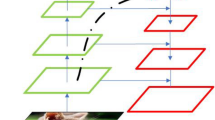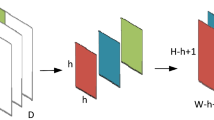Abstract
Pedestrian detection is highly valued in intelligent surveillance systems. Most existing pedestrian datasets are autonomously collected from non-surveillance videos, which result in significant data differences between the self-collected data and practical surveillance data. The data differences include: resolution, illumination, view point, and occlusion. Due to the data differences, most existing pedestrian detection algorithms based on traditional datasets can hardly be adopted to surveillance applications directly. To fill the gap, one surveillance pedestrian image dataset (SPID), in which all the images were collected from the on-using surveillance systems, was constructed and used to evaluate the existing pedestrian detection (PD) methods. The dataset covers various surveillance scenes and pedestrian scales, view points, and illuminations. Four traditional PD algorithms using hand-crafted features and one deep-learning-model based deep PD methods are adopted to evaluate their performance on the SPID and some well-known existing pedestrian datasets, such as INRIA and Caltech. The experimental ROC curves show that: The performance of all these algorithms tested on SPID is worse than that on INRIA dataset and Caltech dataset, which also proves that the data differences between non-surveillance data and real surveillance data will induce the decreasing of PD performance. The main factors include scale, view point, illumination and occlusion. Thus the specific surveillance pedestrian dataset is very necessary. We believe that the release of SPID can stimulate innovative research on the challenging and important surveillance pedestrian detection problem. SPID is available online at: http://ivlab.sjtu.edu.cn/best/Data/List/Datasets.
Access this chapter
Tax calculation will be finalised at checkout
Purchases are for personal use only
Similar content being viewed by others
References
Dalal, N., Triggs, B.: Histograms of oriented gradients for human detection. In: IEEE Computer Society Conference on Computer Vision and Pattern Recognition, CVPR 2005, vol. 1, pp. 886–893. IEEE (2005)
Ess, A., Leibe, B., Gool, L.V.: Depth and appearance for mobile scene analysis. In: IEEE 11th International Conference on Computer Vision, ICCV 2007, pp. 1–8. IEEE (2007)
Dollár, P., Wojek, C., Schiele, B., Perona, P.: Pedestrian detection: l benchmark. In: IEEE Conference on Computer Vision and Pattern Recognition, CVPR 2009, pp. 304–311. IEEE (2009)
Geiger, A., Lenz, P., Urtasun, R.: Are we ready for autonomous driving? The kitti vision benchmark suite. In: Conference on Computer Vision and Pattern Recognition (CVPR) (2012)
Wojek, C., Walk, S., Schiele, B.: Multi-cue onboard pedestrian detection. In: IEEE Conference on Computer Vision and Pattern Recognition, CVPR 2009, pp. 794–801. IEEE (2009)
Enzweiler, M., Gavrila, D.M.: Monocular pedestrian detection: survey and experiments. IEEE Trans. Pattern Anal. Mach. Intell. 31(12), 2179–2195 (2009)
Nam, W., Dollár, P., Han, J.H.: Local decorrelation for improved detection. arXiv preprint arXiv:1406.1134 (2014)
Felzenszwalb, P.F., Girshick, R.B., McAllester, D., Ramanan, D.: Object detection with discriminatively trained part-based models. IEEE Trans. Pattern Anal. Mach. Intell. 32(9), 1627–1645 (2010)
Dollár, P., Tu, Z., Perona, P., Belongie, S.: Integral channel features (2009)
Gkioxari, G., Hariharan, B., Girshick, R., Malik, J.: Using k-poselets for detecting people and localizing their keypoints. In: Proceedings of the IEEE Conference on Computer Vision and Pattern Recognition, pp. 3582–3589 (2014)
Bourdev, L., Malik, J.: Poselets: body part detectors trained using 3D human pose annotations. In: 2009 IEEE 12th International Conference on Computer Vision, pp. 1365–1372. IEEE (2009)
Dollár, P., Appel, R., Belongie, S., Perona, P.: Fast feature pyramids for object detection. IEEE Trans. Pattern Anal. Mach. Intell. 36(8), 1532–1545 (2014)
Zhang, S., Bauckhage, C., Cremers, A.B.: Informed Haar-like features improve pedestrian detection. In: IEEE Conference on Computer Vision and Pattern Recognition, pp. 947–954 (2014)
Zhang, S., Benenson, R., Schiele, B.: Filtered channel features for pedestrian detection. In: IEEE Conference on Computer Vision and Pattern Recognition, pp. 1751–1760 (2015)
Chen, X., Wei, P., Ke, W., Ye, Q., Jiao, J.: Pedestrian detection with deep convolutional neural network. In: Jawahar, C.V., Shan, S. (eds.) ACCV 2014. LNCS, vol. 9008, pp. 354–365. Springer, Heidelberg (2015). doi:10.1007/978-3-319-16628-5_26
Krizhevsky, A., Hinton, G.: Learning multiple layers of features from tiny images (2009)
Krizhevsky, A., Sutskever, I., Hinton, G.E.: ImageNet classification with deep convolutional neural networks. In: Advances in Neural Information Processing Systems, pp. 1097–1105 (2012)
Jia, Y., Shelhamer, E., Donahue, J., Karayev, S., Long, J., Girshick, R., Guadarrama, S., Darrell, T.: Caffe: convolutional architecture for fast feature embedding. In: Proceedings of the ACM International Conference on Multimedia, pp. 675–678. ACM (2014)
Szegedy, C., Liu, W., Jia, Y., Sermanet, P., Reed, S., Anguelov, D., Erhan, D., Vanhoucke, V., Rabinovich, A.: Going deeper with convolutions. In: Proceedings of the IEEE Conference on Computer Vision and Pattern Recognition, pp. 1–9 (2015)
Ren, S., He, K., Girshick, R., Sun, J.: Faster R-CNN: towards real-time object detection with region proposal networks. In: Advances in Neural Information Processing Systems, pp. 91–99 (2015)
Simonyan, K., Zisserman, A.: Very deep convolutional networks for large-scale image recognition. arXiv preprint arXiv:1409.1556 (2014)
Dollar, P., Wojek, C., Schiele, B., Perona, P.: Pedestrian detection: an evaluation of the state of the art. IEEE Trans. Pattern Anal. Mach. Intell. 34(4), 743–761 (2012)
Deng, J., Dong, W., Socher, R., Li, L.J., Li, K., Li, F.F.: ImageNet: a large-scale hierarchical image database, pp. 248–255 (2009)
Acknowledgement
This work was partly funded by NSFC (No. 61571297, No. 61527804), 111 Project (B07022), and China National Key Technology R&D Program (No. 2012BAH07B01). The authors also thank the following organizations for their surveillance data supports: SEIEE of Shanghai Jiao Tong University, The Third Research Institute of Ministry of Public Security, Tianjin Tiandy Digital Technology Co., Shanghai Jian Qiao University, and Qingpu Branch of Shanghai Public Security Bureau.
Author information
Authors and Affiliations
Corresponding author
Editor information
Editors and Affiliations
Rights and permissions
Copyright information
© 2017 Springer International Publishing AG
About this paper
Cite this paper
Wang, D., Zhang, C., Cheng, H., Shang, Y., Mei, L. (2017). SPID: Surveillance Pedestrian Image Dataset and Performance Evaluation for Pedestrian Detection. In: Chen, CS., Lu, J., Ma, KK. (eds) Computer Vision – ACCV 2016 Workshops. ACCV 2016. Lecture Notes in Computer Science(), vol 10118. Springer, Cham. https://doi.org/10.1007/978-3-319-54526-4_34
Download citation
DOI: https://doi.org/10.1007/978-3-319-54526-4_34
Published:
Publisher Name: Springer, Cham
Print ISBN: 978-3-319-54525-7
Online ISBN: 978-3-319-54526-4
eBook Packages: Computer ScienceComputer Science (R0)




